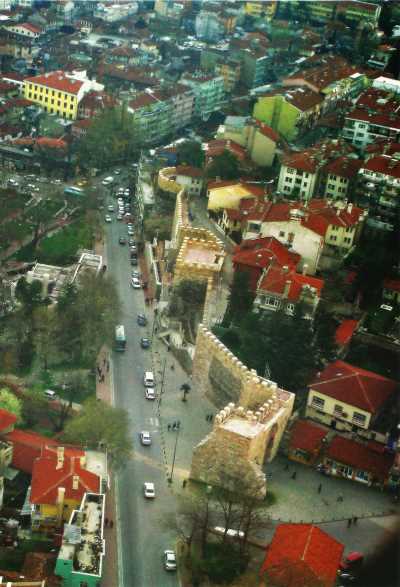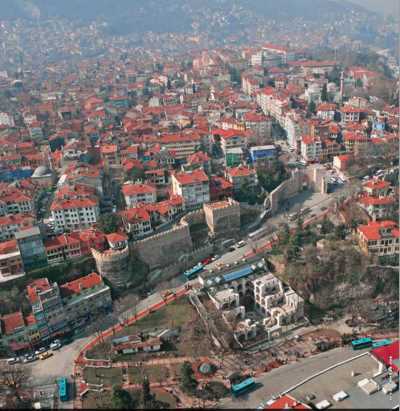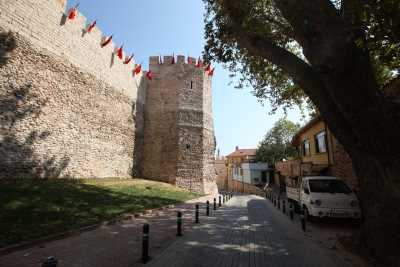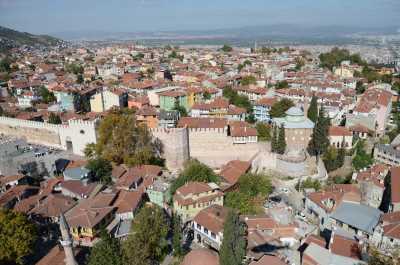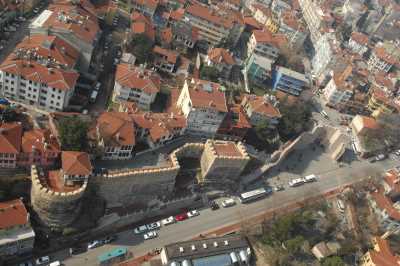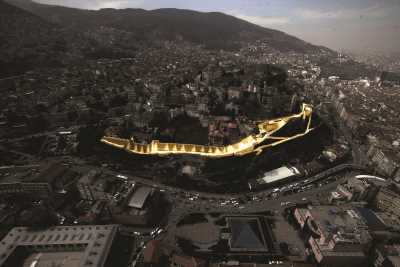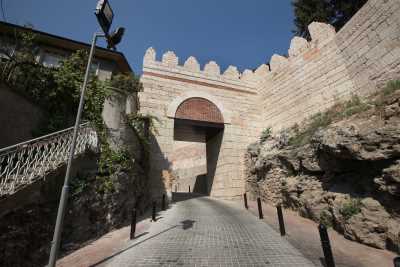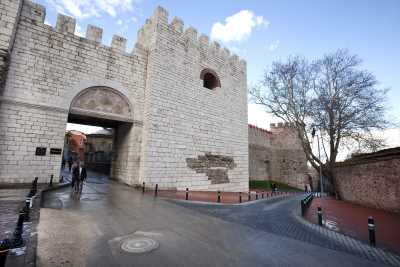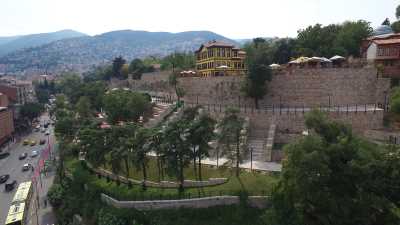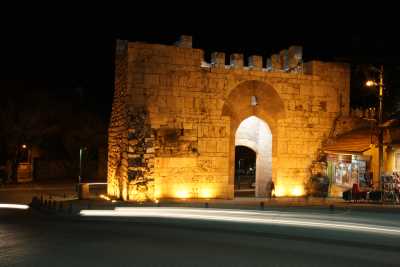Bursa Surları – Bursa
Bursa Surları doğal kayalıklar üzerine Bursa’nın ilk kurucusu olan Bitinyalılar tarafından yapılmıştır.Osmanlı döneminde özellikle Timur saldırılarından sonra ve arkasında gelen Karamanoğlu Mehmet Bey’in kuşatması sonrası Hacı İvaz Paşa tarafından onarılarak güçlendirilmiştir. Surların toplam uzunluğu 3.38 km’dir. Saltanat Kapısı, Yer Kapı, Fetih Kapısı (Su Kapısı), Zindan Kapı ve Kaplıca Kapısı olarak isimlendirilen beş kapısı; Tophane ve Çakır Hamam arasında toplam 14 burcu vardır. 2005 yılı başlarında Bursa Surları’na ait ilk beş yüz metrelik bölümün restorasyonu ile Saltanat Kapı’ya ait projeler Bursa Kültür Varlıklarını Koruma Bölge Kurulu tarafından onaylanmış ve uygulama aşaması bu noktadan başlayarak şu an devam etmektedir. Saltanat Kapı: Diğer adı Hisar Kapı’dır. Bir anlamda Osmanlı öncesi Bursa’sının ana kent kapısıdır. Osmanlı Devleti kuruluş döneminde sınırda kalması ve askeri bir işlev üstlenmesi nedeniyle en önemli kapılardan biri olmuştur. Aynı zamanda İpek ve Baharat Yol’una açılan bu yapı yeniden Bursa’nın simgeleri arasına katılmıştır. Restorasyon çerçevesinde, mevcut taşlar korunmuş ve bitki kökleri temizlenerek orijinal doku ile yeni doku arasında uyum sağlanmıştır. Fetih Kapı (Tören Alanı): Bir zamanlar bayramların kutlandığı, şenliklerin düzenlendiği, panayırların düzenlendiği Pınarbaşı Parkı’nın bulunduğu alan günümüzde tören alanı olarak tekrar düzenlenmiştir. Her yıl fetih kutlamalarına ev sahipliği yapan Fetih Kapı’da aslına uygun olarak restore edilmiştir. Yer Kapı: Bursa kalesi’nin beş kapısından biri olan ve Üftade Camisi ve Türbesi yakınında bulunan Yer Kapı (Bab-ı zemin) Bursa’da Kale içinde Helenistik Dönemin ızgara plan anlayışının izlerini günümüze kadar taşıyan iki ana yoldan biri olan Kavaklı Caddesi’nin sonunda yer almaktadır. Kapı’nın sağında Yer Kapı (Kara Ali) Camisi, solunda ise Muallim hane yer almaktadır. Zindan Kapı: Kaplıca Kapısı’ndan güneye doğru uzanan surlar, Zindan Kapı’ya bağlanmaktadır. Her iki tarafında cezaevi kalıntıları olan Zindan Kapı’nın doğusunda fazla hasara uğramadan günümüze ulaşan köşeli burç, Çelebi Sultan Mehmet tarafından 1418 yılında yaptırılmıştır.
English
The Bursa Ramparts
These were built by Bithynians, the first founder of the city of Bursa, on natural rocks. During the Ottoman period, after the siege of Karamanoğlu Mehmet Bey, especially after the Timur attacks, there were repaired and reinforced by Hacı İvaz Paşa. The total length of the shrines is 3.38 km. There are a total of 14 doors between the Tophane and the Çakır Hamam, five doors called respectively the Sultanate Gate, the Place Gate, the Conqueror Gate (Water Gate), the Dungeon Gate and the Hot Spring Gate. In the beginning of 2005, the restoration of the first 500-meter section belonging to the Bursa Walls was approved by the Bursa Cultural Assets Conservation District Board and projects of the Sultanate Gate were approved by this point. The Sultanate Gate: The other name is Hisar Kapı (the Fortress Gate). It is the main city gate of pre-Ottoman Bursa. During the Ottoman Empire, it was one of the most important gates due to its border and military function. This building, which opened onto the Silk and Spice Road, became one of the symbol of Bursa. In the framework of the restoration, the existing stones were preserved, the plant roots were cleaned and the original texture and the new texture were harmonized. The Conquest Door (Ceremony Area): The area where the festivals were celebrated, the festivals were arranged, the parks were organized and the area where the Pınarbaşı Park is located has been reorganized as a ceremonial area. Every year, the Fetih Kapı, which hosts the conquest celebrations, has been restored in accordance with the original one. The Floor Door: One of the five gates of the Bursa Castle and located near to the Üftade Mosque and the Tomb, is situated at the end of the Kavaklı Avenue, which is one of the two main roads carrying the traces of the Hellenistic Period. On the righ side of the gate, there is the Floor Gate Mosque and the Muallim House is on the left. The Dungeon Gate: The walls extending from the Hot Spring Gate to the south are connected to the Dungeon Gate. It was built in 1418 by Çelebi Sultan Mehmed, and has remnants of a prison on both sides of the gate and it also has the angular bastion that still exists to this day without much damage on the east of the Zindan Gate.

